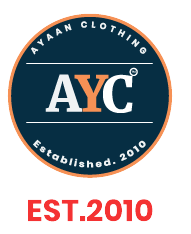Bangladesh’s garments industry has earned a significant place in the global fashion supply chain, standing as the second-largest exporter of readymade garments (RMG) after China. The country’s competitive advantages, including low labor costs, a large skilled workforce, and government incentives, have enabled it to become a vital player in apparel manufacturing. As global fashion evolves, Bangladesh has numerous opportunities to further expand and solidify its position within the global fashion supply chain.
Shifting Global Trends: A Window of Opportunity
- Post-Pandemic Resilience
The COVID-19 pandemic disrupted supply chains globally, and many companies are now seeking more reliable and diversified sourcing destinations. Bangladesh, with its experience and capacity, stands as a preferred alternative for companies looking to diversify from over-reliance on China. - Sustainability Demands
Sustainability is a rising concern for both consumers and brands. Global fashion companies are increasingly focusing on environmentally friendly and ethical practices. Bangladesh, with several of the world’s green-certified garment factories, has an opportunity to position itself as a leading producer of sustainable apparel. Investing in eco-friendly materials, energy-efficient processes, and waste reduction will allow Bangladesh to meet this growing demand. - Rising Demand for Fast Fashion
The global demand for fast fashion is continuing to grow, particularly from younger consumers seeking affordable and trendy clothing. Bangladesh’s ability to quickly produce large volumes of garments at competitive prices aligns with this demand, offering it a significant growth avenue.
Opportunities for Value Addition
- Moving Up the Value Chain
Traditionally, Bangladesh has been known for producing basic garments like t-shirts, jeans, and sweaters. However, there is significant potential for the industry to move up the value chain by producing high-end fashion, including branded, designer, and technical apparel. Investments in design innovation, product development, and marketing can help transform Bangladesh from a low-cost supplier to a hub of value-added garment production. - Development of Local Textile Industry
Currently, Bangladesh imports a substantial amount of raw materials, such as cotton and synthetic fibers. There is an opportunity for vertical integration by developing the local textile industry, which will reduce dependency on imports, shorten lead times, and allow manufacturers to be more flexible in responding to global fashion trends. This would also boost Bangladesh’s competitive edge in the fashion supply chain. - Collaborating with Global Brands
As international fashion brands increasingly seek strategic partnerships with ethical and sustainable suppliers, Bangladesh can benefit by forging long-term collaborations. These partnerships can offer insights into global fashion trends, increase demand for innovative designs, and ensure a steady flow of orders.
Emerging Markets and Regional Opportunities
- Market Diversification
Currently, Bangladesh exports a majority of its garments to the European Union and the United States. However, there are untapped opportunities in emerging markets such as East Asia, Latin America, and Africa. Expanding into these regions will help the country diversify its export base and reduce reliance on traditional markets. - Regional Trade Agreements
Bangladesh is strategically located in South Asia, which offers an advantage for regional trade partnerships. The country can leverage agreements like the South Asian Free Trade Area (SAFTA) and regional cooperation initiatives like the Belt and Road Initiative (BRI) to improve access to raw materials, reduce trade barriers, and strengthen its role in the global supply chain.
Adopting Technology and Innovation
- Adoption of Industry 4.0
With technological advancements like automation, artificial intelligence (AI), and robotics transforming industries worldwide, the garments sector in Bangladesh can adopt these technologies to boost productivity and efficiency. The integration of Industry 4.0 tools can enable the country to remain competitive while addressing challenges related to rising labor costs and global supply chain disruptions. - Digitalization and E-commerce Integration
As the global retail landscape shifts toward e-commerce, there is an opportunity for Bangladesh’s garments industry to adopt digital tools to streamline operations. From digitizing supply chain management to integrating with global e-commerce platforms, these innovations can open doors to new markets and enhance operational transparency, which is increasingly demanded by international buyers.
Improving Compliance and Worker Welfare
- Focus on Ethical Production
Global brands are increasingly placing importance on ethical production and fair labor practices. By improving working conditions, enhancing safety measures, and ensuring fair wages, Bangladesh can attract more international brands concerned about responsible sourcing. A continued focus on worker welfare will also help the country avoid the reputational damage associated with past industrial accidents. - Corporate Social Responsibility (CSR) Initiatives
Bangladesh can gain a competitive advantage by integrating CSR into its business models. This includes initiatives like community development programs, women empowerment, and reducing carbon footprints. Brands with a strong commitment to ethical and sustainable sourcing are more likely to partner with countries that reflect their values.

